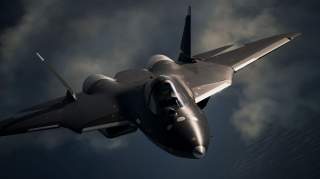The Reason Russia All of a Sudden Scrambled Half Of Its Stealth Fighters
We can make sense of it.
Rather, the unprecedented decision to utilize six of Russia’s most advanced fifth-generation fighters—approximately half of the currently available roster—in a VIP escort mission is the latest step in Russia’s ongoing Su-57 branding campaign.
Several weeks ago, Russian President Vladimir Putin’s IL-96-300PU presidential plane was flanked by no less than six Su-57 stealth fighter jets while en route to the 929th Chkalov State Flight-Test Center in southwestern Russia.
Video footage of the flight shows the Su-57 fighters grouped in what better resembles a parade column than an escort formation, suggesting a soft-power intent behind Putin’s trip. There are several factors at play. First and perhaps least significant, this footage of six functional Su-57’s heads off any and all speculation that the 2019 Victory Day Parade airshow was called off for any reason other than the Defense Ministry’s cited weather concerns.
(This first appeared in May 2019.)
Other coverage has focused on the political connotations, noting that the Chkalov Center trip took place shortly before Putin’s Sochi meeting with Pompeo. While partially convincing, this line of reasoning cannot explain the timing. If Putin wanted to stage a diplomatic show of force, why now and not during his prior meetings with President Trump and National Security Advisor John Bolton? After all, Russia’s strategic approach vis-a-vis the US has remained largely consistent over the past several years.
Rather, the unprecedented decision to utilize six of Russia’s most advanced fifth-generation fighters—approximately half of the currently available roster—in a VIP escort mission is the latest step in Russia’s ongoing Su-57 branding campaign. Unsurprisingly, Putin has repeatedly showered the Su-57 with adulation over the past several years; it was only several months ago that he referred to it as the best fighter in the world. But as high-stakes Su-57 export talks with Turkey, India, and China continue to unfold, Putin is adopting what appears to be an increasingly proactive role in advertising the Su-57 to prospective buyers.
Upon his arrival at the flight test center, Putin discussed the merits of the Su-57 with several of its test pilots; one called it a “great leap into the future,” while others suggested that certain technical details are still being worked out. “We need it [the Su-57] to be the best in the world,” Putin told the pilots, while encouraging them to provide Su-57 engineers with all the relevant feedback that they can. “We are very much counting on you, on your professionalism.”
As underscored by this interaction, certain technical aspects of the Su-57 are still being worked out. Perhaps the most crucial among them are the fighter’s ongoing engine troubles. The Su-57 was designed with the powerful Izdeliye 30 engine, allowing for 28,000lbs of dry thrust and 42,000lbs of afterburning. But Izdeliye 30 was delayed due to engineering setbacks, and pre-production models were equipped with the weaker Al-41F1 engine as a temporary stopgap measure. It remains to be seen if the upcoming serial production models—including one to be delivered later this year—will ship with the new engine.
On the one hand, Putin’s heightened personal involvement signals just how heavily invested the Kremlin has become in the Su-57’s commercial success. But on the other, Putin’s willingness to tie his personal reputation to Russia’s fifth-generation flagship fighter may speak to his growing confidence in its long-term viability.
Mark Episkopos is a frequent contributor to The National Interest and serves as research assistant at the Center for the National Interest. Mark is also a PhD student in History at American University. Image: Creative Commons.

